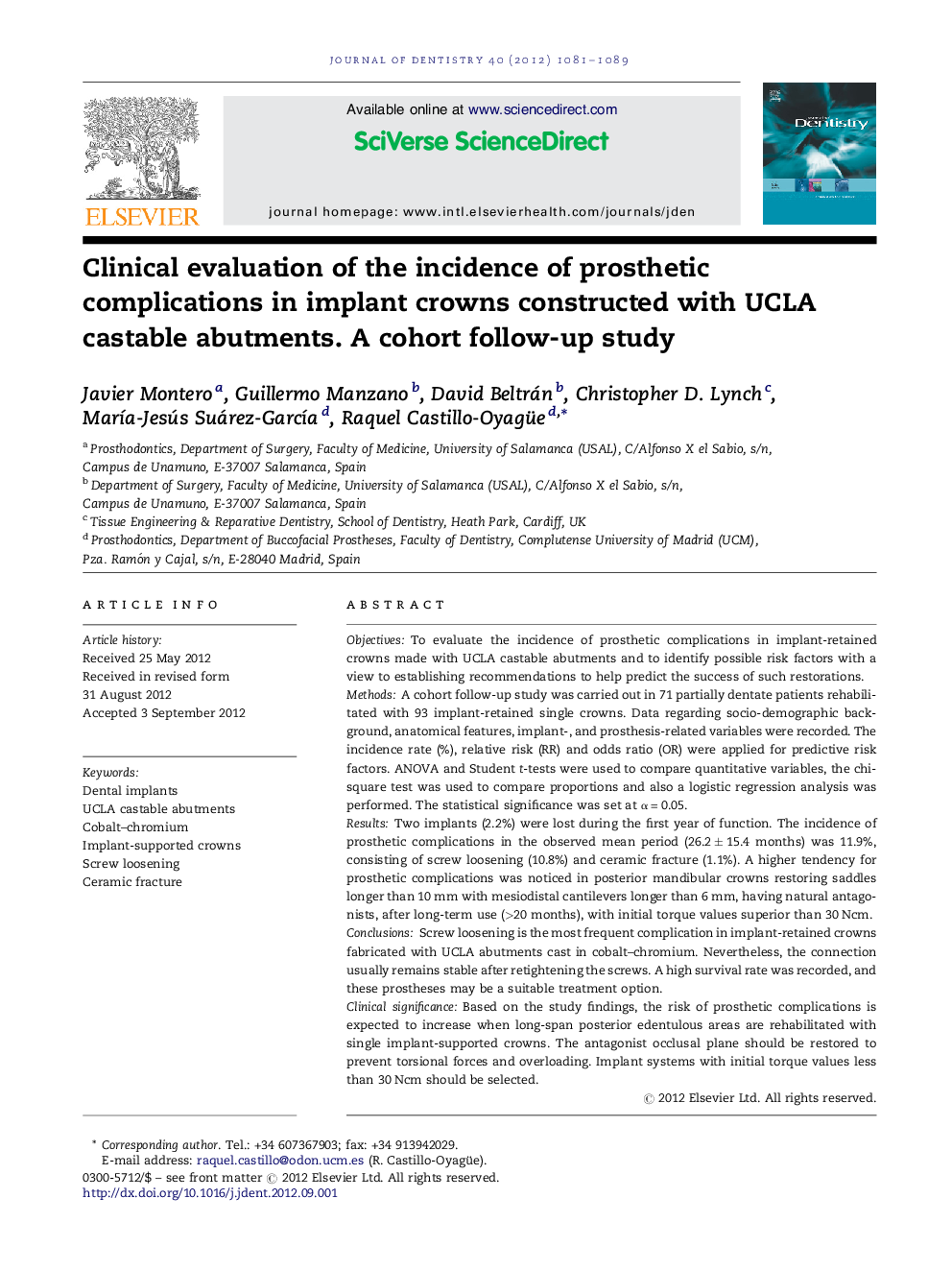| Article ID | Journal | Published Year | Pages | File Type |
|---|---|---|---|---|
| 6053690 | Journal of Dentistry | 2012 | 9 Pages |
ObjectivesTo evaluate the incidence of prosthetic complications in implant-retained crowns made with UCLA castable abutments and to identify possible risk factors with a view to establishing recommendations to help predict the success of such restorations.MethodsA cohort follow-up study was carried out in 71 partially dentate patients rehabilitated with 93 implant-retained single crowns. Data regarding socio-demographic background, anatomical features, implant-, and prosthesis-related variables were recorded. The incidence rate (%), relative risk (RR) and odds ratio (OR) were applied for predictive risk factors. ANOVA and Student t-tests were used to compare quantitative variables, the chi-square test was used to compare proportions and also a logistic regression analysis was performed. The statistical significance was set at α = 0.05.ResultsTwo implants (2.2%) were lost during the first year of function. The incidence of prosthetic complications in the observed mean period (26.2 ± 15.4 months) was 11.9%, consisting of screw loosening (10.8%) and ceramic fracture (1.1%). A higher tendency for prosthetic complications was noticed in posterior mandibular crowns restoring saddles longer than 10 mm with mesiodistal cantilevers longer than 6 mm, having natural antagonists, after long-term use (>20 months), with initial torque values superior than 30 Ncm.ConclusionsScrew loosening is the most frequent complication in implant-retained crowns fabricated with UCLA abutments cast in cobalt-chromium. Nevertheless, the connection usually remains stable after retightening the screws. A high survival rate was recorded, and these prostheses may be a suitable treatment option.Clinical significanceBased on the study findings, the risk of prosthetic complications is expected to increase when long-span posterior edentulous areas are rehabilitated with single implant-supported crowns. The antagonist occlusal plane should be restored to prevent torsional forces and overloading. Implant systems with initial torque values less than 30 Ncm should be selected.
